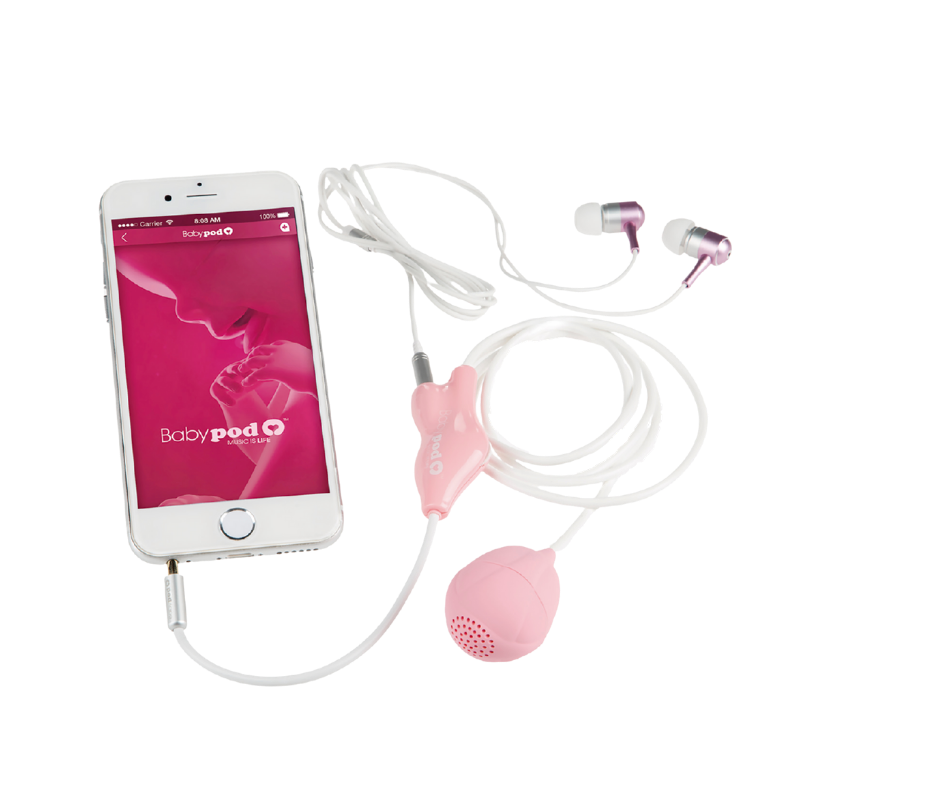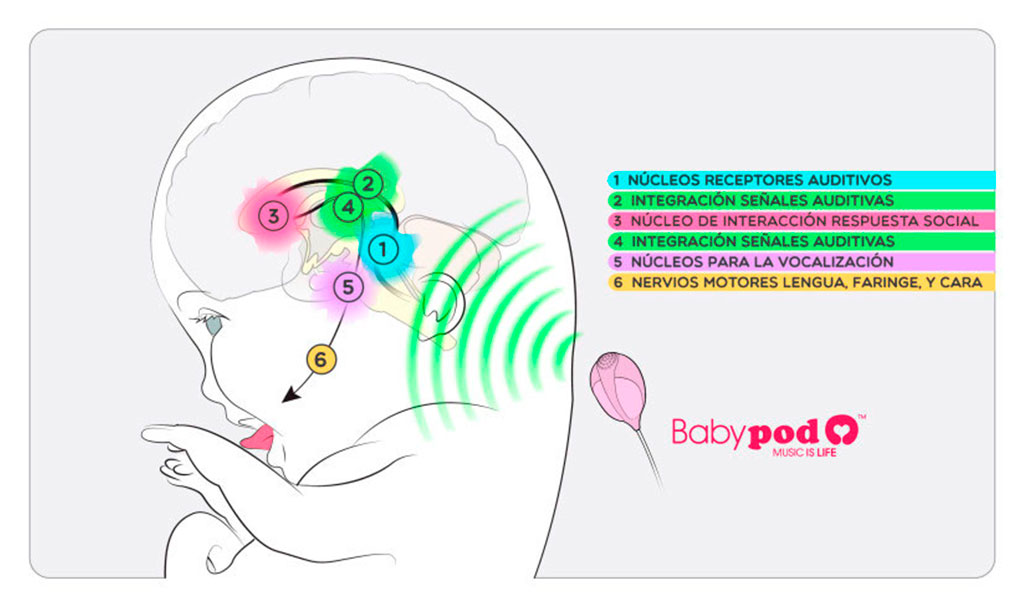El feto recibe sonidos del interior del cuerpo de su madre tales como los latidos del corazón, la respiración y los movimientos intestinales. También percibe los sonidos procedentes de lo que hace su madre, cuando ésta habla o cuando camina con sus tacones, además de oír ruidos del exterior.
El feto está muy protegido de los ruidos. El hecho de que viva en un ambiente insonorizado hace que los sonidos le lleguen distorsionados tal y como han confirmado investigaciones realizadas en ovejas con micrófonos intrauterinos. Según estos trabajos, la mayoría de los sonidos le llegan como susurros (unos 30 decibelios), mientras que la voz materna emitida en conversación en tono normal (60 decibelios) prácticamente no le llega (24 decibelios).
Además, como la mayoría de los sonidos son muy repetitivos, se acostumbra y no reacciona a ellos. No le impiden dormir.
Así, podemos decir que el ambiente sonoro del útero es como el ruido de fondo de un bosque.







